
Ant Control Services in Charleston, SC
Charleston, SC, is celebrated for its historic charm, waterfront views, and subtropical sea breezes—but those same coastal conditions also make the Lowcountry a magnet for ants. Tiny as they are, ants can create outsized problems for homeowners, from contaminating kitchens to weakening wood. All U Need Pest Control delivers ant control tailored to Charleston’s climate, construction styles, and neighborhood layouts—so you get fast relief now and long-term prevention tomorrow.
Charleston’s hot, humid summers and mild winters keep ants active nearly year-round. Storm surges, king tides, and heavy rains often push colonies to relocate, which is why invasions can spike after weather events. Some species, like carpenter ants, tunnel through damp wood and can compromise framing and trim over time. Others—especially fire ants—threaten people and pets with painful stings. Without the right strategy, colonies split, spread, and grow harder to eradicate.
At All U Need Pest Control, we build custom ant treatment plans around your home’s unique pressure points—from crawl spaces and pier-and-beam foundations to shaded courtyards and backyard patios. Our licensed technicians inspect, identify, and treat at the source using species-specific methods that remove colonies and keep them from coming back. Ready for relief? Schedule your Charleston inspection today and reclaim your space.
Pest Control Services in Charleston, SC
- Bed Bug Control
- Beetle Control
- Cockroach Control
- Flea Control
- Home General Pest Control
- Hornet Control
- Millipede Control
- Mosquito Control
- Pantry Pest Control
- Rat & Rodent Control
- Scorpion Control
- Silverfish Control
- Spider Control
- Stink Bug Control
- Termite Control
- Tick Control
- Wasp Control
- Winter Control
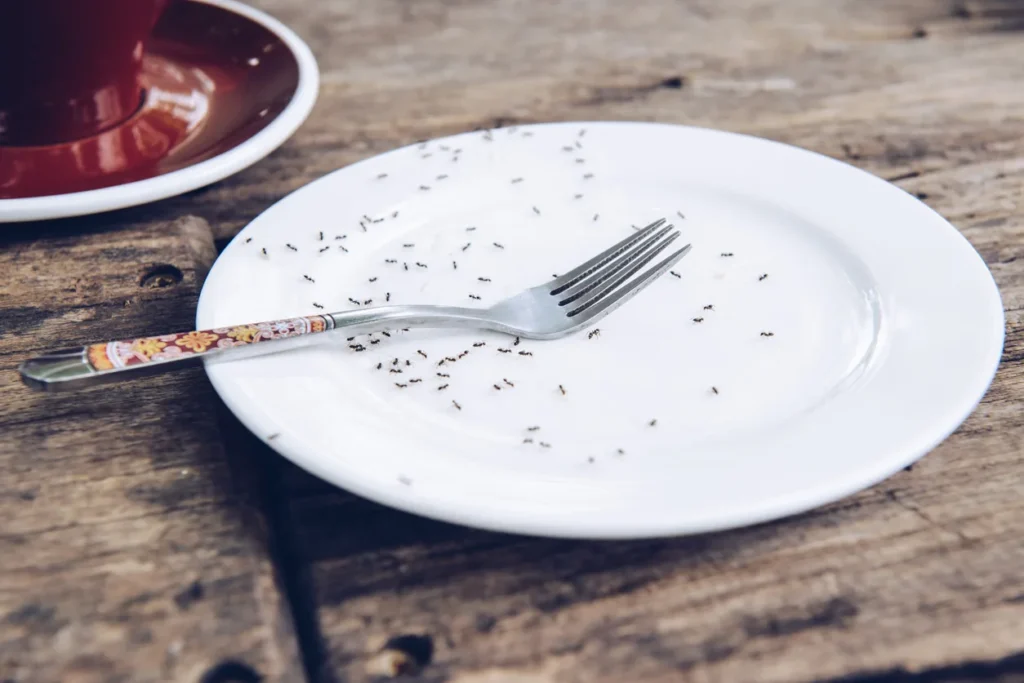
How to Get Rid of Ants in Charleston, SC
Many Charleston homeowners start with DIY sprays or off-the-shelf baits. While those can knock down a few foragers, they rarely reach the queen—and may even cause budding, where a stressed colony splits into multiple nests. That’s how a small issue becomes a full-blown Lowcountry takeover.
The most reliable way to get rid of ants is to partner with a professional service that understands local species and the way Charleston homes are built. At All U Need Pest Control, we tailor each plan to the exact ant you’re dealing with and the extent of the infestation—so treatments actually solve the root cause.
Our process begins with a detailed inspection of kitchens, baths, wall voids, crawl spaces, attics, foundation lines, and the landscape around the home. We trace trails, locate satellite nests, and map conducive conditions like moisture pockets and vegetation touching the structure. From there, we implement non-repellent residuals, targeted baits matched to the ants’ current food preferences (sugar, protein, or oils), and barrier treatments that intercept foragers before they enter.
Because Charleston’s weather swings between humid heat and intense thunderstorms, we pair your initial service with follow-up visits that monitor activity and re-establish protective zones. When needed, we add entry-point sealing, adjust bait placements seasonally, and recommend simple homeowner steps (like modifying irrigation) that make your property less attractive to ants. Precision identification + a layered strategy = faster elimination and longer-lasting protection.
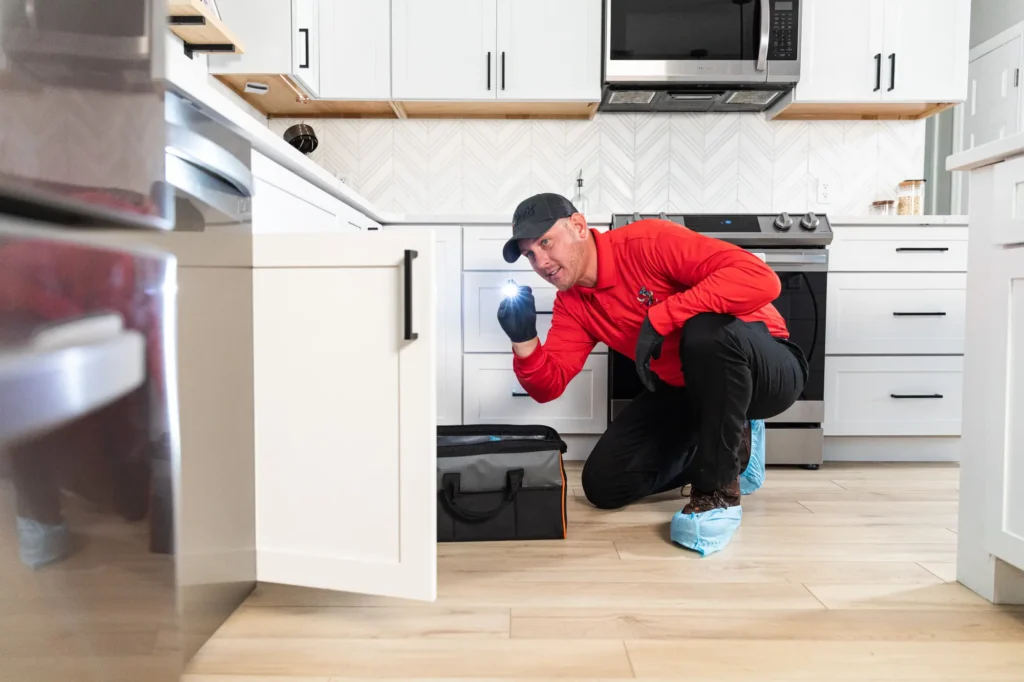
Signs of an Ant Infestation in Charleston, SC
In Charleston’s coastal climate, ants can be active in every season. The earlier you catch the warning signs, the easier it is to get ahead of the problem. Watch for these common indicators around your home—from the Peninsula and West Ashley to James Island, Johns Island, Mount Pleasant, and North Charleston.
Ant Mounds
Many species, including fire ants and big-headed ants, create raised mounds in lawns, garden beds, and near foundations. Charleston’s sandy, well-drained soils are perfect for underground tunnels, and mounds often appear after heavy rain when colonies rebuild or relocate.
Avoid disturbing mounds—especially fire ant mounds. Agitating them can trigger a fast, aggressive swarm. Instead, note the locations and call a professional. Correct identification matters because the most effective treatments differ by species and season, and improper DIY attempts can cause colonies to split and spread across the yard.
Sawdust or Wood Shavings
Carpenter ants excavate wood to nest, leaving behind small piles of frass that resemble sawdust or pencil shavings. Look around windows, door frames, baseboards, porch posts, and attic or crawl-space timbers—especially in areas that stay damp after rain or near slow leaks.
If you’re seeing shavings, act quickly. In historic Charleston homes and coastal builds with shaded eaves, carpenter ant galleries can extend deep into framing members. Our team targets both the parent and satellite nests while helping you address moisture conditions that attract them in the first place.
Structural Damage
As carpenter ants hollow out wood, they weaken structural elements. Over time, you may notice integrity issues. Here are signs that carpenter ants may be compromising your Charleston home:
- Sagging in floorboards or ceiling areas becoming noticeable
- Difficulty with door alignment causing operation issues
- Wall corners visibly breaking apart or chipping
- Weak steps snapping with little effort
- Hollow response when knocking on wooden floor beams
These symptoms can also be associated with moisture damage, so a professional inspection helps distinguish causes and plan the right repairs and treatments.
Discarded Wings
Reproductive ants (alates) develop wings, swarm to mate, then shed their wings. Piles of tiny, matching wings near windows, sills, light fixtures, or attic vents can signal a new colony forming inside. In Charleston, swarms often follow stretches of warm, humid weather or a storm system moving through the coast. If you’re unsure whether you’re seeing ants or termite swarmers, save a sample or take a close photo—proper ID leads to the correct fix.
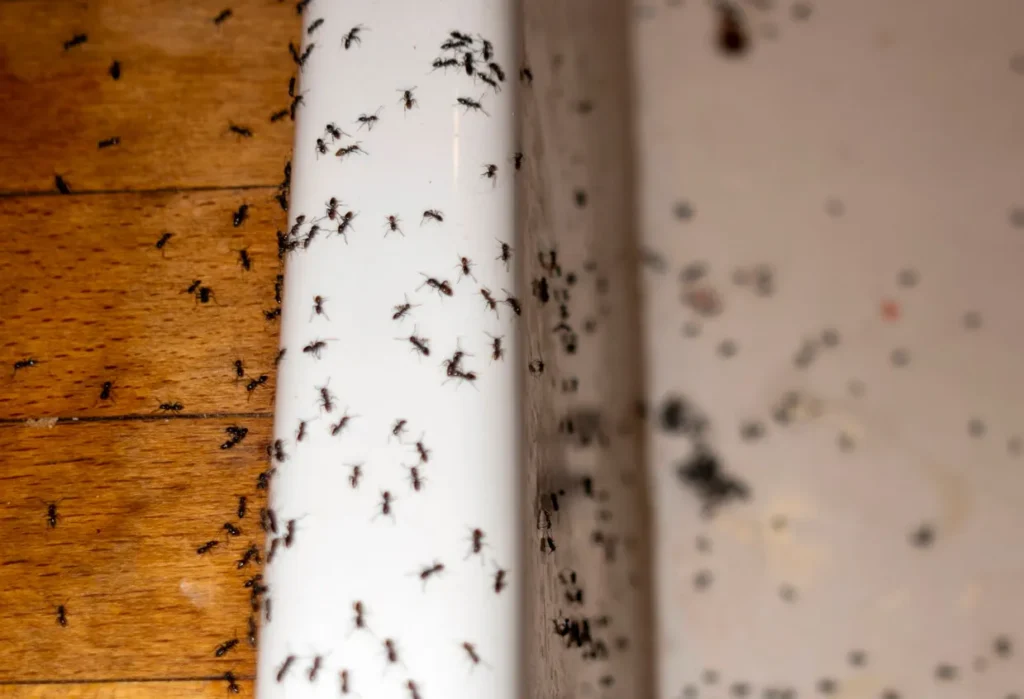
Types of Ants in Charleston, SC
Charleston hosts a variety of ant species, and each demands a different control strategy. That’s why identification is step one. Here are the most common Lowcountry culprits:
Fire Ants
Infamous for painful, venomous stings, fire ants build conspicuous mounds across lawns, parks, and play areas. Construction zones and newly landscaped yards can become hotspots, and heavy summer rains often drive colonies to higher ground—sometimes right up to foundations and patios.
Effective control combines direct mound treatments with broadcast or perimeter strategies that reduce reinvasion pressure. We also advise on irrigation and yard practices that discourage new queens from establishing after storms. If you have kids or pets, proactive treatment is the safest route.
Carpenter Ants
Large, typically black or red-and-black, carpenter ants prefer damp or decaying wood. In Charleston, we frequently find them in shaded soffits, porch columns, crawl spaces with high humidity, and around slow plumbing or roof leaks. They don’t eat wood—but their tunneling can cause real damage.
Our approach targets galleries with non-repellent products and baits the ants will share within the colony. We pair treatment with moisture control recommendations, ventilation improvements, and vegetation management to make your home less welcoming to future colonies.
Argentine Ants
Small, light brown, and notorious for forming supercolonies, Argentine ants overwhelm properties with interconnected nests. They trail along foundation lines, fences, and landscape borders and will stream indoors seeking sweets and moisture—especially during dry spells or after you’ve “chased” them with a repellent spray.
Because they share food between nests, we rely on carefully selected baits and a wide-area strategy to disrupt the colony network. Spot spraying the few you see won’t solve it—targeted baiting and non-repellent barriers will.
Ghost Ants
Tiny and translucent with dark heads, ghost ants are easy to miss and hard to control without the right tools. They’re drawn to sweet foods and moisture, so kitchens, bathrooms, and laundry rooms are frequent targets. Their small size lets them slip through hairline cracks and utility gaps.
We use discreet indoor bait placements and non-repellent micro-applications that eliminate the colony rather than driving it deeper into walls. Sealing and sanitation guidance round out the plan for lasting results.
Big-Headed Ants
Named for their proportionally large heads, these reddish-brown ants are common in Charleston’s sandy soils. They excavate beneath turf, pavers, and landscape borders, creating loose soil and small mounds. While not aggressive like fire ants, their nesting can mar lawns and undermine hardscapes.
Treatment focuses on active nesting zones with soil-level applications plus perimeter protection to prevent recolonization. Because they often fragment into multiple small colonies, consistent follow-through matters.
Acrobat Ants
Acrobat ants raise their heart-shaped abdomens when disturbed and often nest in damp wood or foam insulation. In the Lowcountry, we see them enter via tree limbs touching roofs, vine-covered walls, and utility lines.
A winning strategy includes exterior vegetation trimming, sealing utility penetrations, and targeted non-repellent treatments along their travel routes. Addressing moisture in siding, soffits, and crawl spaces helps stop repeat activity.
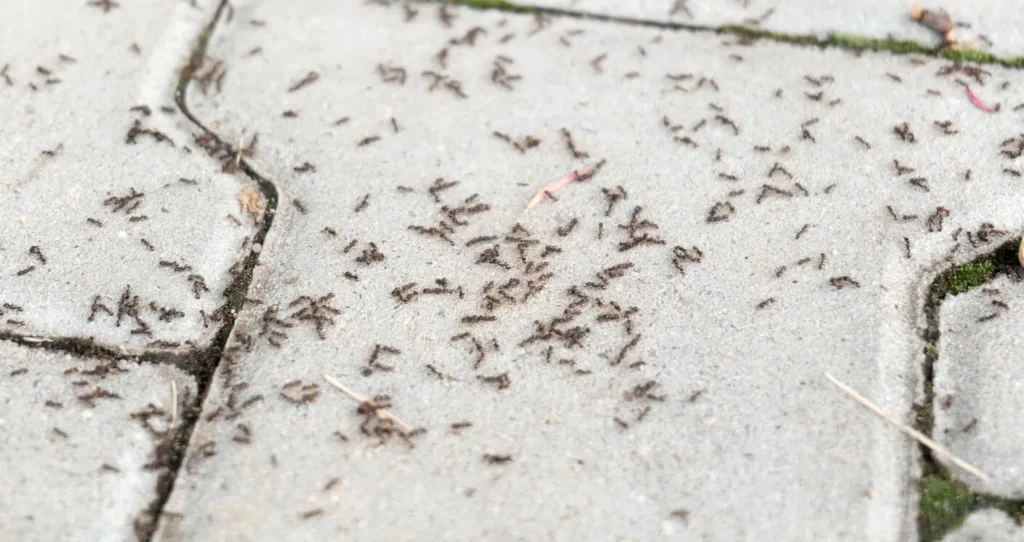
Eco-Friendly Solutions
Prefer a greener approach? We offer eco-conscious ant control based on Integrated Pest Management (IPM), emphasizing inspection, exclusion, sanitation, targeted applications, and monitoring. When appropriate, we incorporate low-impact tools that support both safety and results.
Diatomaceous earth can help in certain dry, protected locations by desiccating ants on contact. Cornstarch may smother small clusters when used correctly. And for outdoor mounds, boiling water can reduce a small colony—though accuracy and safety are essential, and results are often temporary for deeper nests.
For persistent or large infestations, professional products and precise placement become critical, especially in historic or coastal homes where ants exploit tiny gaps. Our treatments are designed to be family- and pet-conscious, with a focus on minimizing product use while maximizing effectiveness. Ask about exterior-first maintenance plans that greatly reduce the need for indoor applications over time.
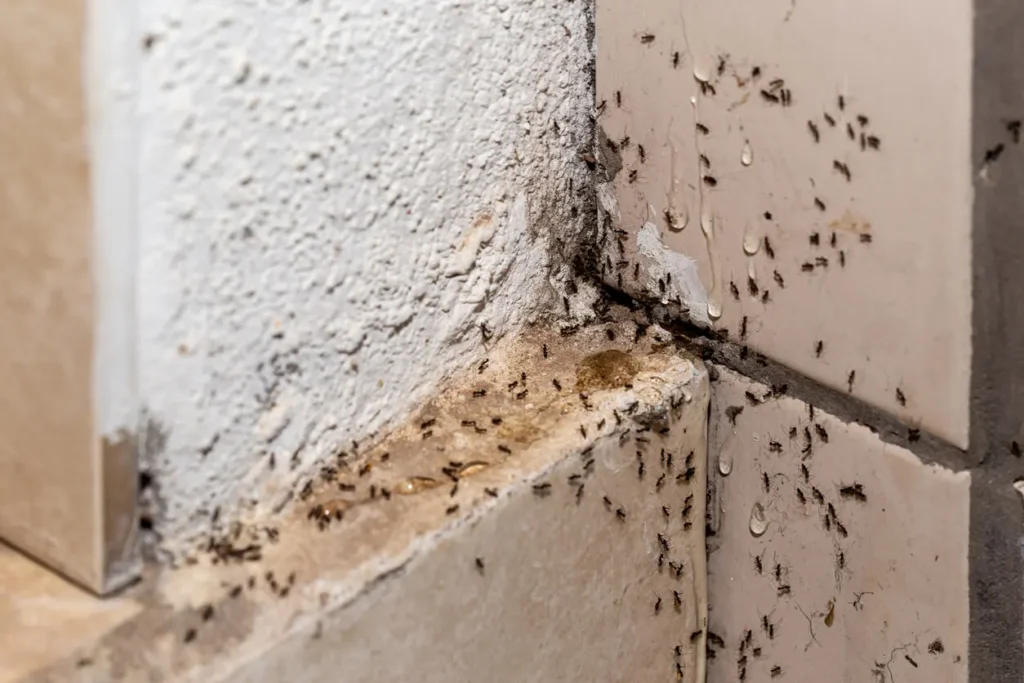
How to Prevent Ants in Charleston, SC
Prevention is your best defense—especially in a climate where warmth and humidity keep ants active. By understanding where ants thrive and removing the attractants that invite them in, you can dramatically cut down on trails and nesting.
Know Where Ants Like to Hang Out
Ants target areas with easy access to food, water, and harborage. In Charleston’s coastal homes, that includes tiled rooms, spaces with plumbing, and gathering areas. Keep a closer eye on the zones below:
- Spaces where your family gathers to eat, like the dining room or living room
- Inside gaps in the walls
- Behind tiles in kitchens and bathrooms
- Near air cooling systems
Regularly wipe, vacuum, and check for damp spots in these locations. During high-humidity stretches, run exhaust fans after showers and consider a dehumidifier in problem rooms.
Seal Potential Entry Points
Ants can enter through cracks you can barely see. Inspect around window and door frames, foundation lines, utility penetrations, weep holes, and crawl-space vents. Use quality exterior-grade caulk, install weather stripping, and fit door sweeps to reduce gaps.
Charleston’s heavy rains and shifting soils can subtly open new hairline cracks. Re-inspect after storm cycles, especially around porch steps, slab transitions, and siding penetrations, and keep shrubs and vines from touching the structure—they act as bridges over treated zones.
Maintain a Clean Environment
Even a few crumbs are a jackpot for foragers. Wipe counters, sweep floors, rinse recycling, and empty sealed trash bins regularly. Outdoor living is a Lowcountry staple, but patio meals and oyster roasts can leave residue ants quickly discover. Clean grills, tables, and deck boards after use, and store sweet syrups and mixers indoors between gatherings.
Inside, don’t forget the hidden hotspots: under appliances, inside cabinet corners, and around pet feeding stations. Quick touch-ups in these areas go a long way.
Remove Access to Food
Store pantry staples—cereal, flour, sugar, snacks—in airtight containers. Avoid leaving fruit and baked goods out overnight, and wipe sticky residue from jars and bottles. Feed pets on a schedule and clean bowls afterward; consider a tray for easy cleanup.
Wiping pantry shelves with a mild vinegar solution can help disrupt ant scent trails. If you’ve had recent activity, focus first on tight storage, then on finding and treating the source.
Eliminate Water Sources
Moisture is a magnet. Fix leaky faucets, sweating pipes, and slow drains. Improve airflow in bathrooms, laundry rooms, and crawl spaces. Clear gutters and downspouts so water moves away from the foundation rather than pooling beside it.
Check irrigation schedules—overwatering lawns and beds creates prime ant habitat. Adjust timers seasonally and repair broken heads that saturate the soil near the house.
Perform Yard Maintenance
Trim trees, shrubs, and vines so they don’t contact siding or rooflines—especially live oaks, palmettos, and ivy that can form “ant highways.” Keep a vegetation-free buffer next to the foundation with gravel or stone instead of moisture-holding mulch. Elevate and distance firewood and lumber, and monitor landscape borders, paver edges, and fence lines where ants often trail.
Pair these maintenance steps with a professional exterior barrier program and you’ll have a strong, year-round defense against reinfestation.
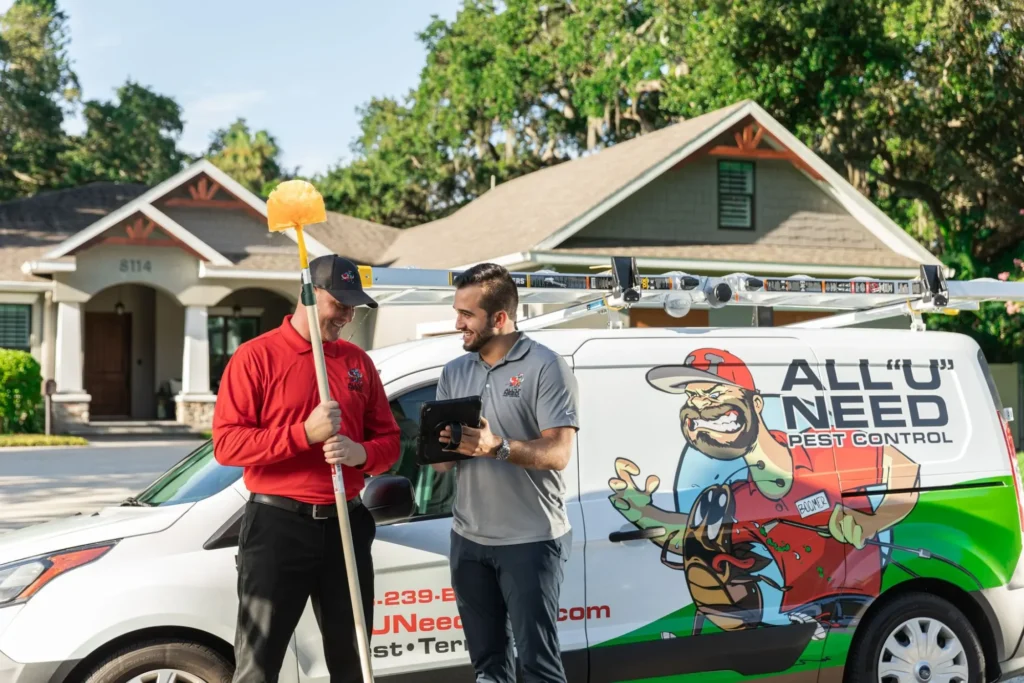
Protect Your Home From Ants With Expert Pest Control in Charleston, SC
If ants are marching through your Charleston home, All U Need Pest Control is ready to help. Our experienced technicians specialize in ant identification and elimination across the tri-county area. We start with a thorough inspection, then build a custom plan that targets nests, blocks entry points, and reduces the conditions that attract ants.
We don’t just knock down foragers—we eliminate colonies and create a long-term prevention strategy tailored to Lowcountry living. Whether you’re fighting fire ants in the yard, carpenter ants in damp wood, Argentine or ghost ants in kitchens and baths, or big-headed and acrobat ants around foundations, we’ve got you covered.
Serving neighborhoods across Greater Charleston—Downtown Charleston, West Ashley, Mount Pleasant, North Charleston, Daniel Island, James Island, Johns Island, Hanahan, Goose Creek, and Summerville—we offer convenient scheduling, clear communication, and service plans that keep protection active through peak seasons.
Ready for a home that’s calm, clean, and ant-free? Contact All U Need Pest Control today to schedule your inspection and get a customized ant control plan built for Charleston’s climate, architecture, and lifestyle. We’ll protect what matters—so you can enjoy Lowcountry living without the unwanted guests.
Location Contact:
419 N Cedar St Summerville, SC 29483
Get Directions for 419 N Cedar StSummerville, SC 29483 on Google Maps843-489-8818
Call All "U" Need Pest Control